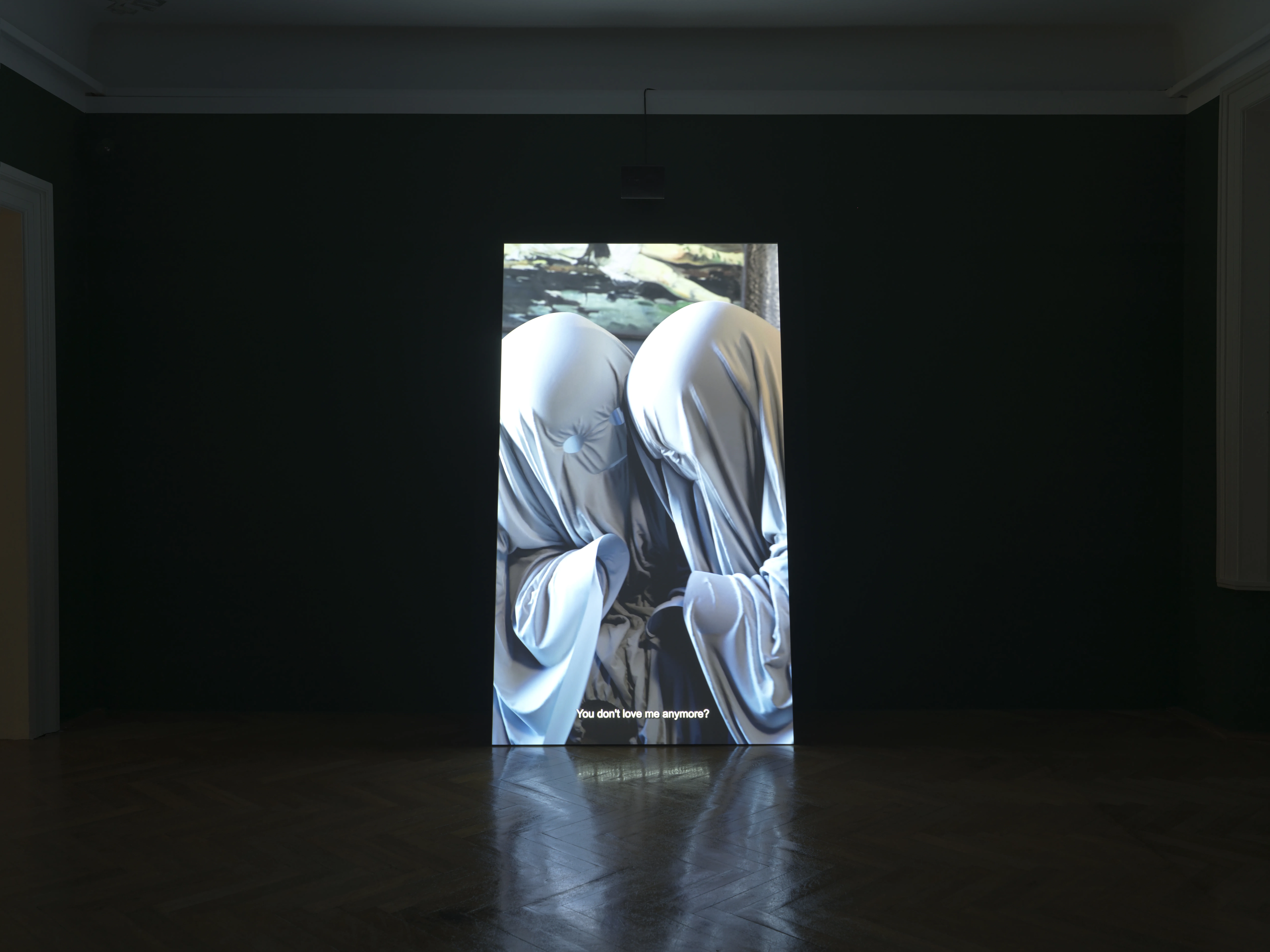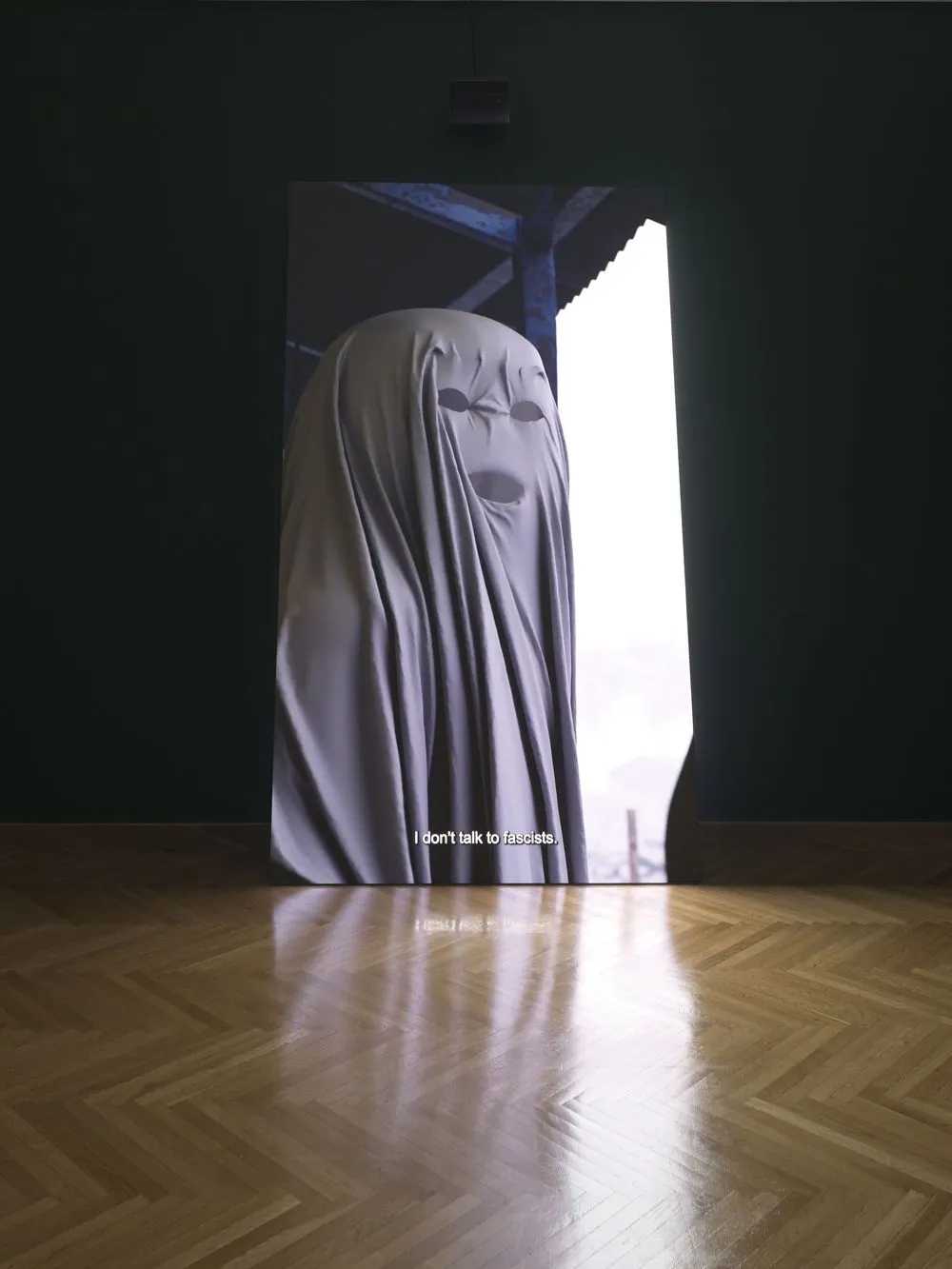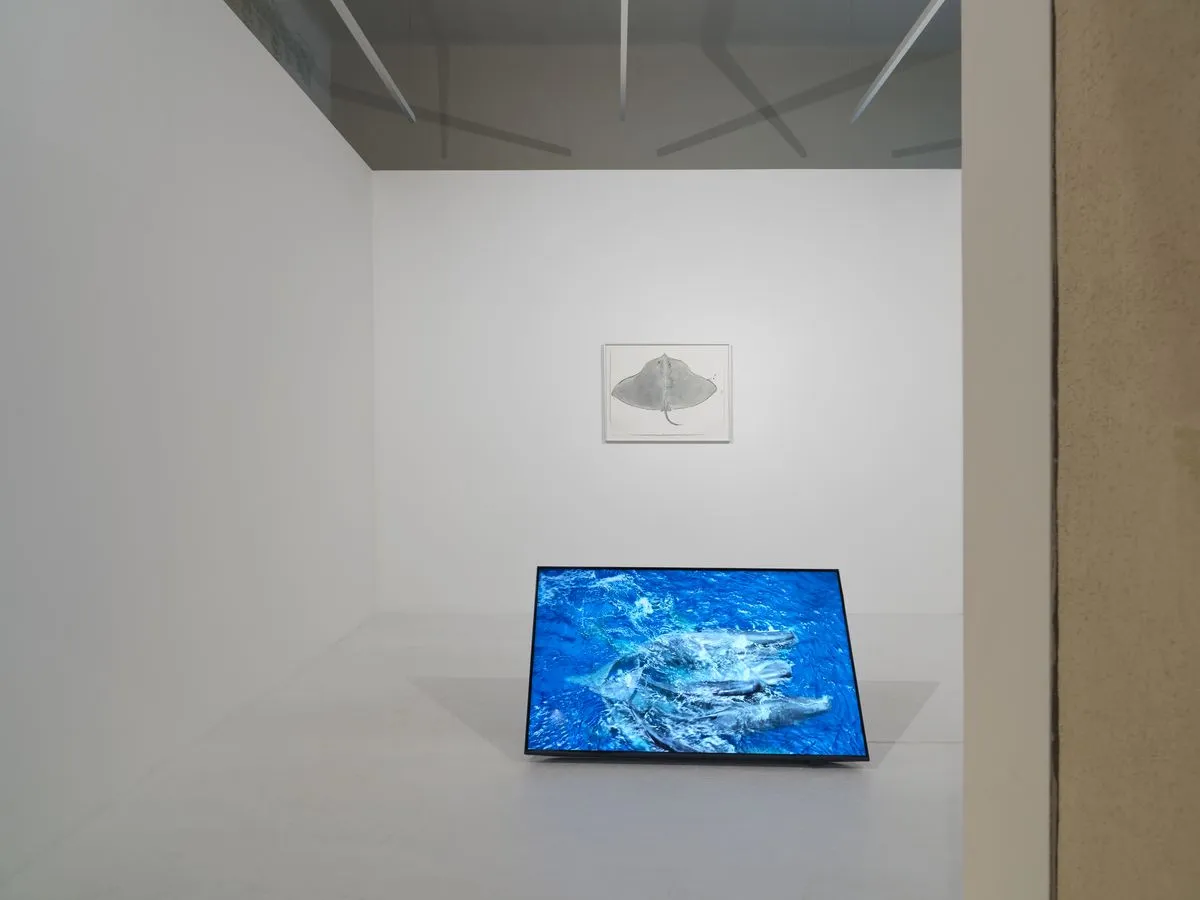 The 36th Ljubljana Biennale of Graphic Arts, Museum of Modern Art (MG+), Ajša Pengov, Žogica Marogica (Speckles the Ball), 1951. Photo: Jaka Babnik. MGLC Archive
The 36th Ljubljana Biennale of Graphic Arts, Museum of Modern Art (MG+), Ajša Pengov, Žogica Marogica (Speckles the Ball), 1951. Photo: Jaka Babnik. MGLC Archive At a time when democracy is rapidly eroding, paving the way for the steady return of fascist politics, the 36th Ljubljana Biennale of Graphic Arts turns to an ancient form of inquiry: the oracle. Curated by Chus Martínez and marking the Biennale's 70th anniversary, The Oracle. On the Regeneration of Democracy invites us to imagine art not simply as commentary, but as a site of inquiry, fantasy, and possibility. The exhibition positions itself as a place of collective consultation—an oracular space where the wishes, doubts, and projections of artists and publics converge to ask: How do we reclaim agency and solidarity in a fractured political landscape? How do we dream forward and envision new ways of coexisting?
Marking an important milestone this year, the Ljubljana Biennale of Graphic Arts is one of the oldest biennials in the world—and among the few with roots in socialist internationalism. Founded in 1955 in socialist Yugoslavia, the Biennale emerged from a context marked by cultural ambition, universalist ideals, and a vibrant artistic exchange that defied Cold War binaries. Yugoslavia's unique position—non-aligned yet globally engaged—shaped the Biennale's ethos from the start, fostering dialogue across geopolitical divides and championing printmaking as a democratic, accessible medium.
Withstanding the dissolution of the common state, the Biennale continued to evolve. While originally centered on printmaking, it has since expanded its scope to include installation, performance, and moving image—while maintaining a commitment to experimentation and social imagination. This year's edition, hosted at venues across Ljubljana, carries this legacy forward: foregrounding experimental approaches while holding space for artistic practices that engage political imagination. All but two of the works on view were commissioned for the Biennale, reaffirming its role as a space for the production—not just presentation—of contemporary art.
"An exhibition—like an oracle—relies on the sum of inquiries posed by the artists and the will to connect and motivate all the visitors. Regaining motivation and a sense of self-fulfilment are nourishing elements for a renaissance of orality and meaningful communication. Democracy depends on trusting each other’s experiences and on finding paths to slowly recover from these times of radical greed."
— Chus Martínez
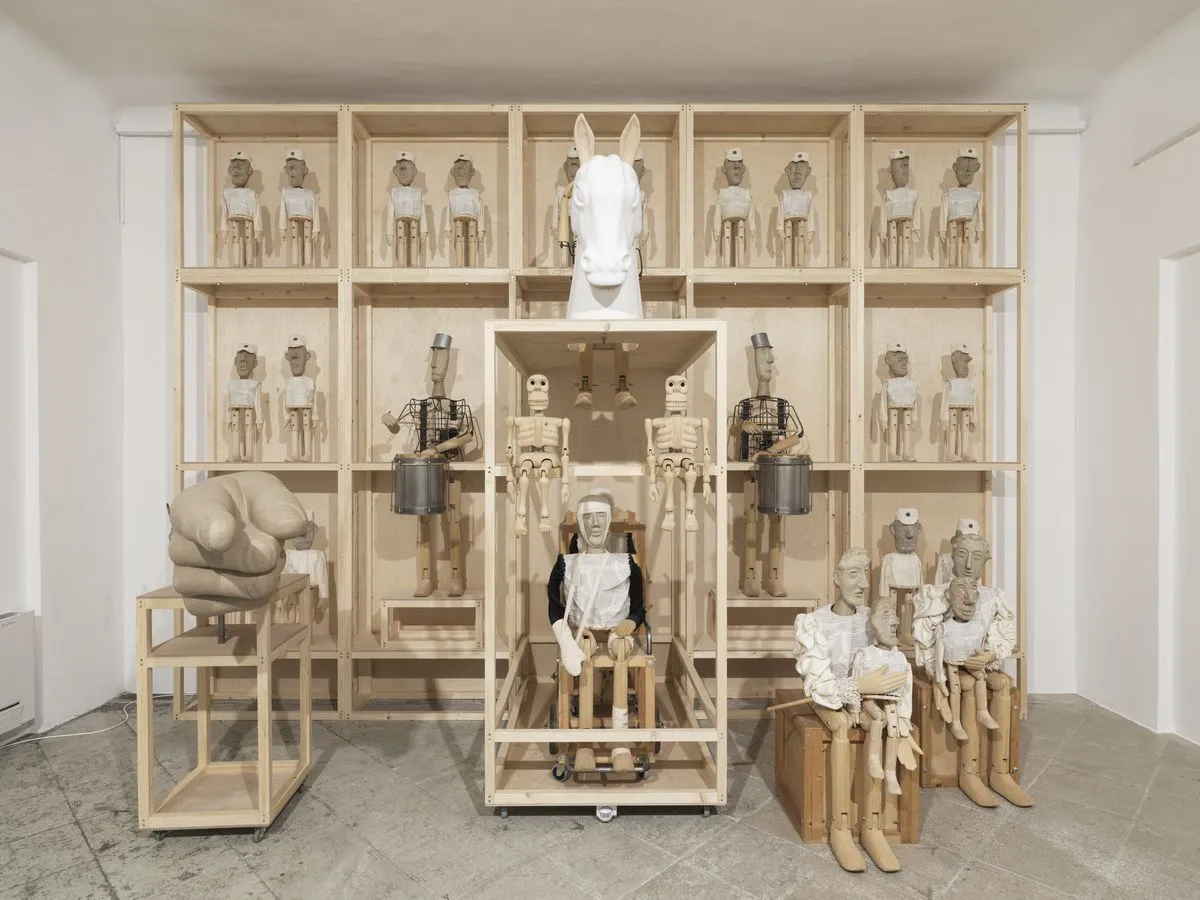
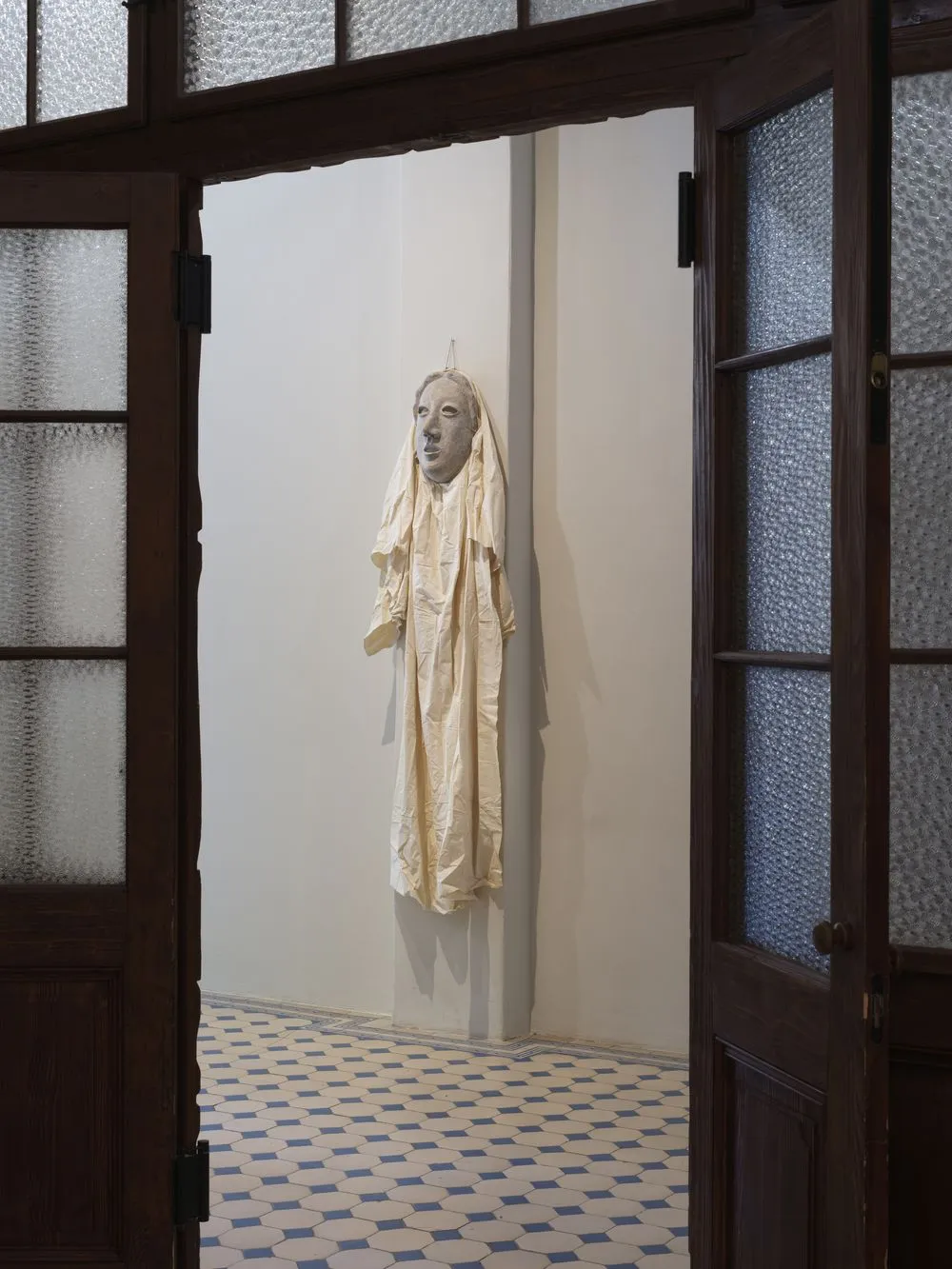
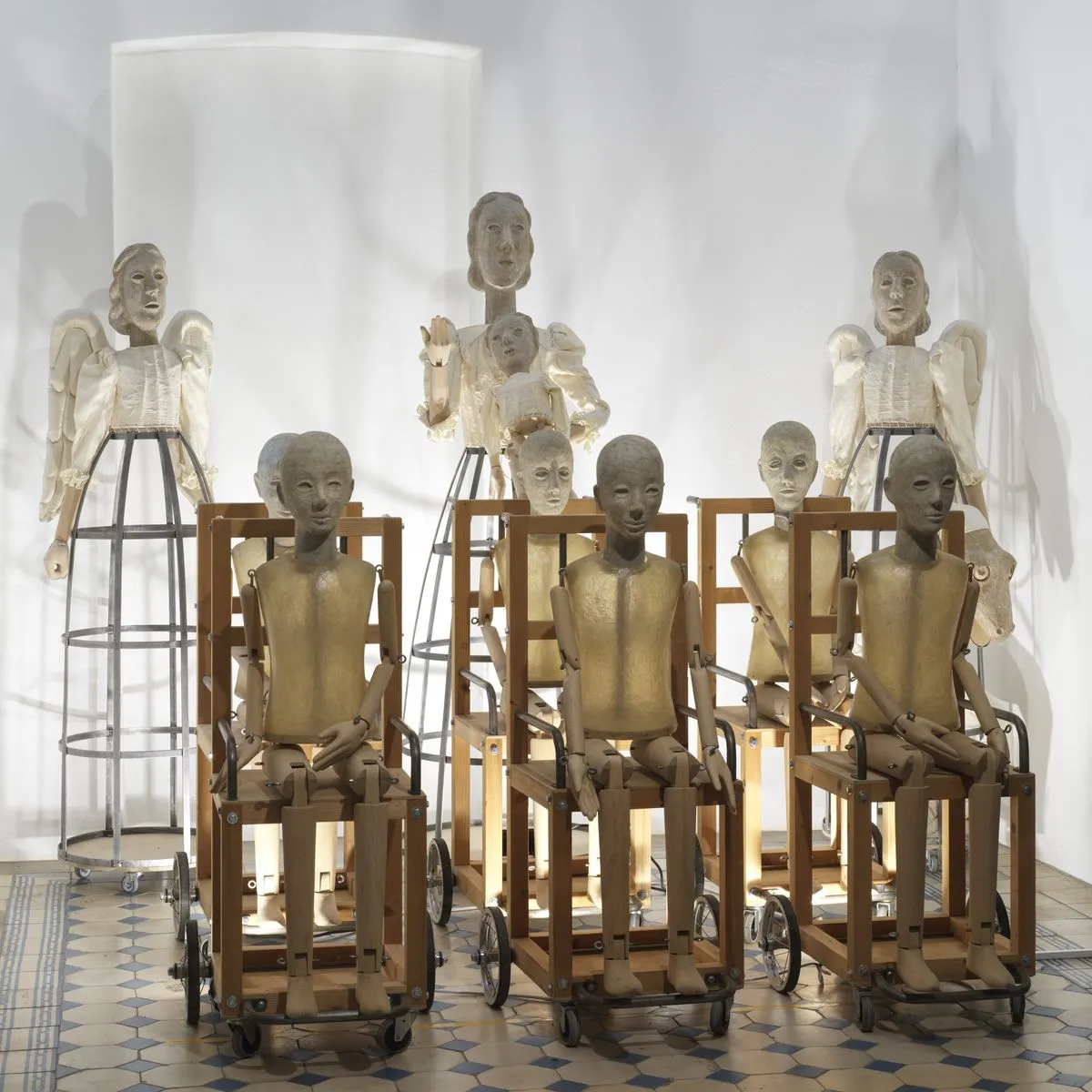
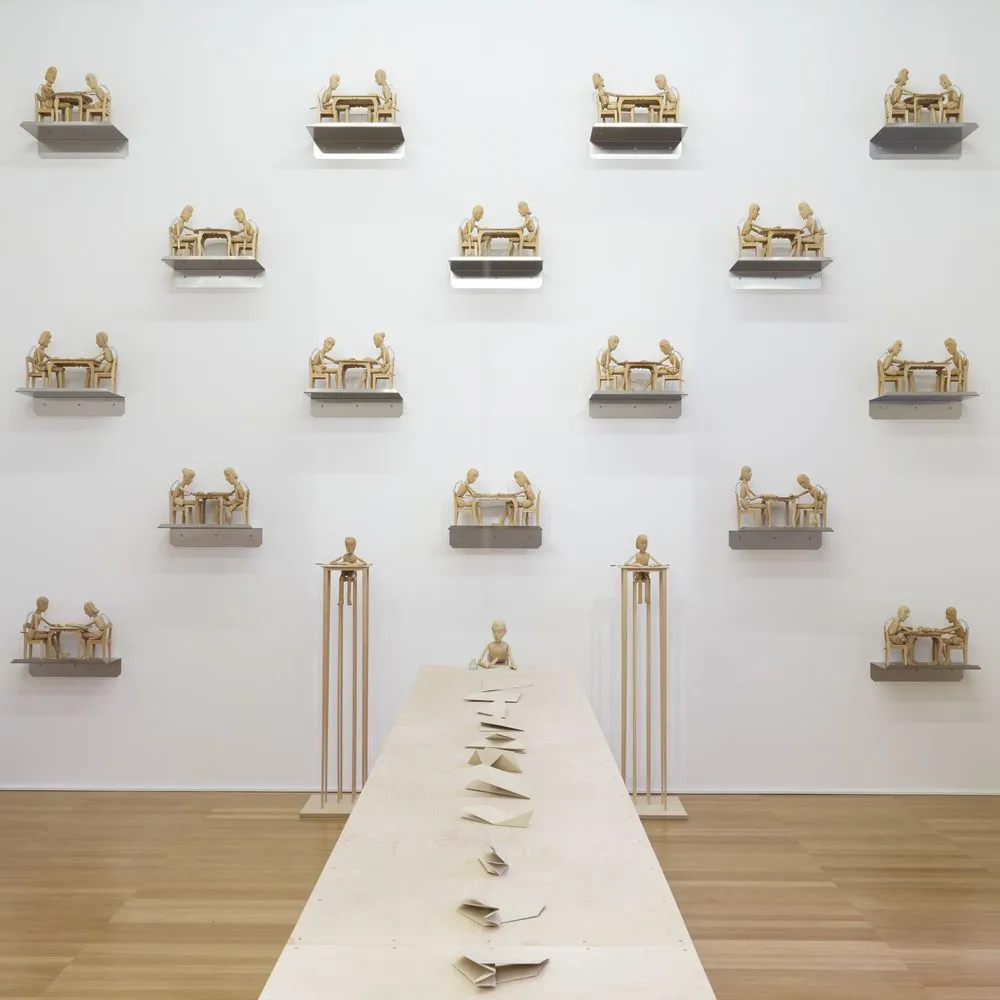
Central to the Biennale's inquiry is the figure of the puppet—a symbol charged with questions of control, autonomy, and resistance. Drawing on the legacy of Žogica Marogica—a brightly coloured, spherical puppet with absurdly long strings, designed by Ajša Pengov in the 1950s and beloved by generations of Slovenians—the exhibition explores how puppetry embodies the tension between being controlled and asserting independence. Puppets, traditionally manipulated by strings or hands, become a powerful metaphor for contemporary concerns: who holds power, who is allowed agency, and how systems of control can be reimagined or dismantled. This dynamic reflects broader anxieties around technology, identity, and governance, inviting us to reconsider our own roles as both actors and spectators within social and political systems.
“A biennale constitutes an environmental practice; that is, it forces us to look into a particular place and cultural context again and again. There, I found Žogica, a figure that embodies tradition, politics, and the need to invent systems able to transmit, educate, and connect people.”
— Chus Martínez
Silvan Omerzu's sculptural installations, which greet visitors across all venues, extend this metaphor—bringing puppetry into conversation with literature, mythology, and theatre. Deeply rooted in the Slovenian puppetry tradition, Omerzu's practice draws on its rich history of allegory and critique while pushing its formal and narrative boundaries. Each installation responds to the specific site it inhabits, weaving together references to figures like poet Ivan Cankar, ancient mythologies, and the city's political past. Frozen in motion or animated by mechanical movement, his puppets are both characters and symbols—at once theatrical and sculptural, expressive and unsettling. Through them, puppetry emerges not just as an art form but as a critical tool for storytelling—one that reflects on power, violence, hope, and the potential for collective futures grounded in solidarity and self-determination.
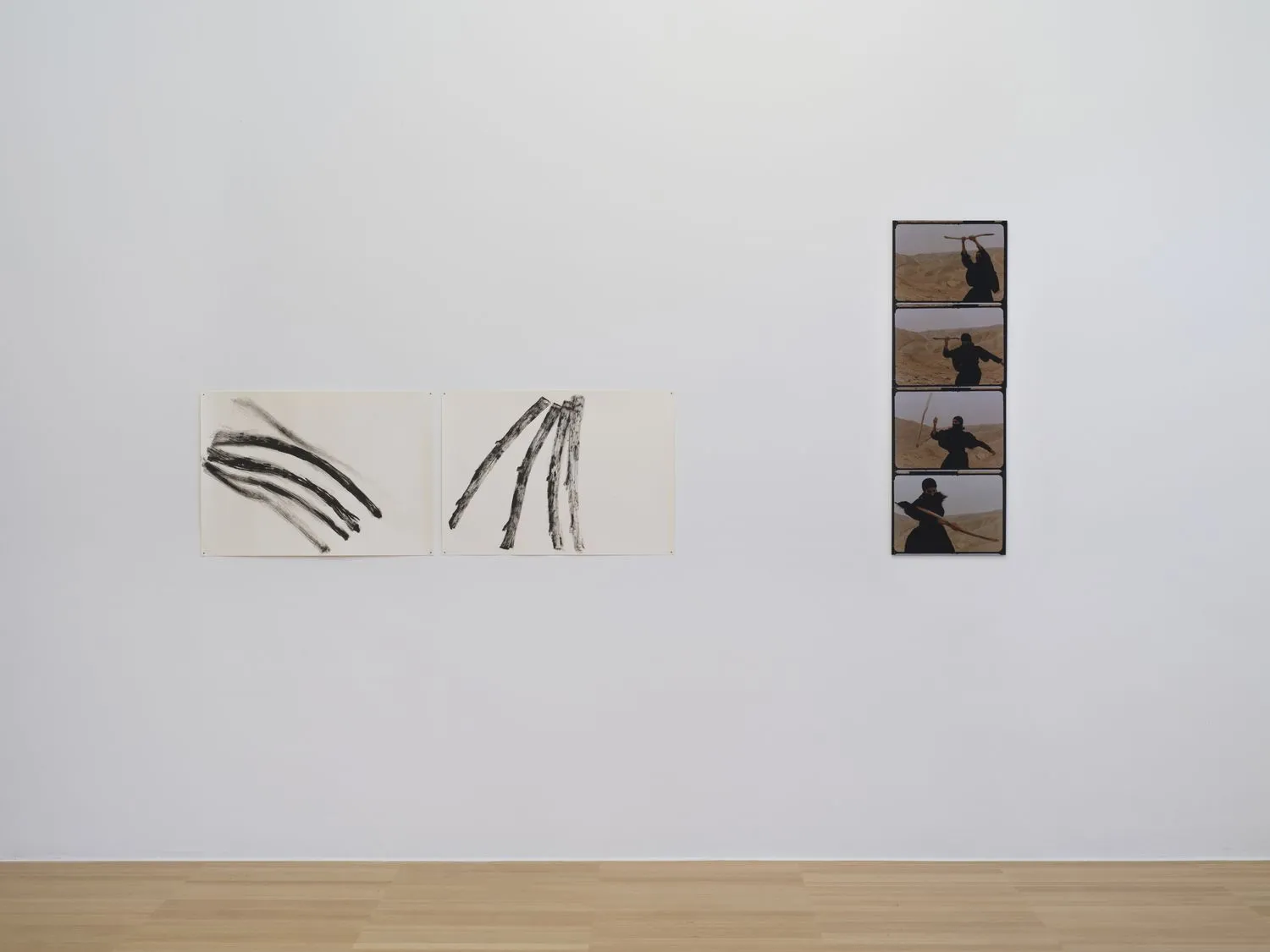
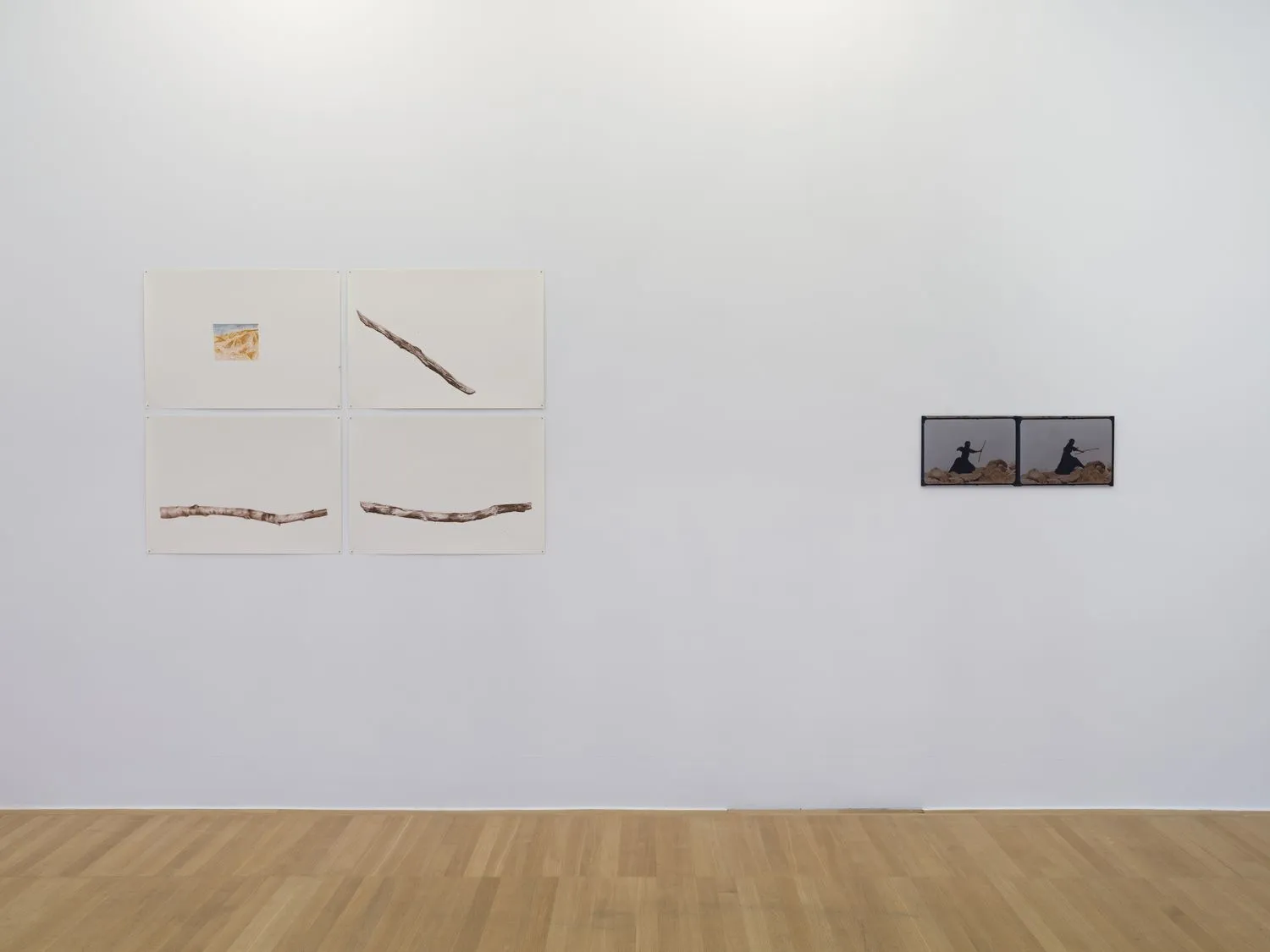
Reflecting the Biennale's themes of agency and resistance, Palestinian artist Noor Abed's a study of a stick: movement notations and notes on defiance (2025), presented at the Museum of Modern Art, uses film stills and drawings to explore dance as a form of political expression. A large image depicts a lone woman dancer holding a stick—an ancient tool and symbol of survival and struggle. Accompanying movement notations highlight the stick's role as a medium of ritual, war, and freedom. Abed's work ignites collective imagination toward protecting the vulnerable, weaving a powerful narrative of resistance and hope. This compelling investigation rightfully earned her the Grand Prize at the Biennale.
In the next room, Nohemí Pérez’s Guardians (2025) invites a different form of collective attunement—one that centers non-human life. The installation features towering black trees rendered in charcoal, remnants and witnesses to extractivist violence and ecological collapse. Among the scorched trunks, embroidered animals flicker in vivid color: delicate presences that evoke resilience, symbiosis, and ancestral abundance. Pérez’s interplay of charcoal and embroidery conjures cycles of life and loss, grounding the work in the conflict-ridden forests of northern Colombia while pointing to the broader precarity of planetary life. In a Biennale attuned to relation and repair, her piece stands as a quiet testament to care, interdependence, and the enduring wisdom of more-than-human worlds.
Over at MGLC Švicarija, Joan Jonas extends this logic of care across species with her 2024 video To Touch Sound. Created in collaboration with marine biologist David Gruber, the video documents the rare birth of a sperm whale, revealing the profound support and protection offered by the pod's female members during this vulnerable moment. This intimate portrayal of alloparental care highlights lifelong bonds and shared responsibility, emphasizing the essential role of community and mutual aid in survival—core themes resonating deeply within the Biennale's inquiry into regeneration, collective resilience and solidarity.
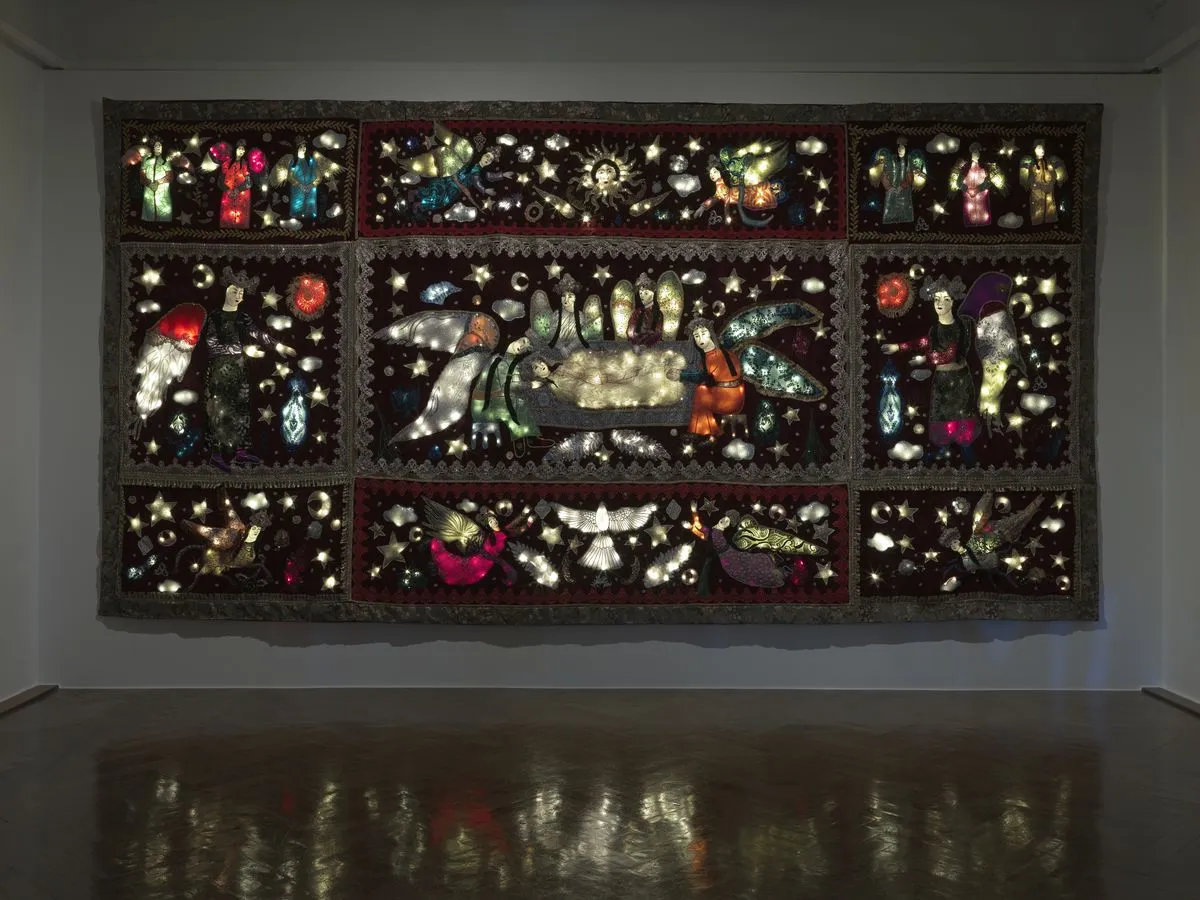
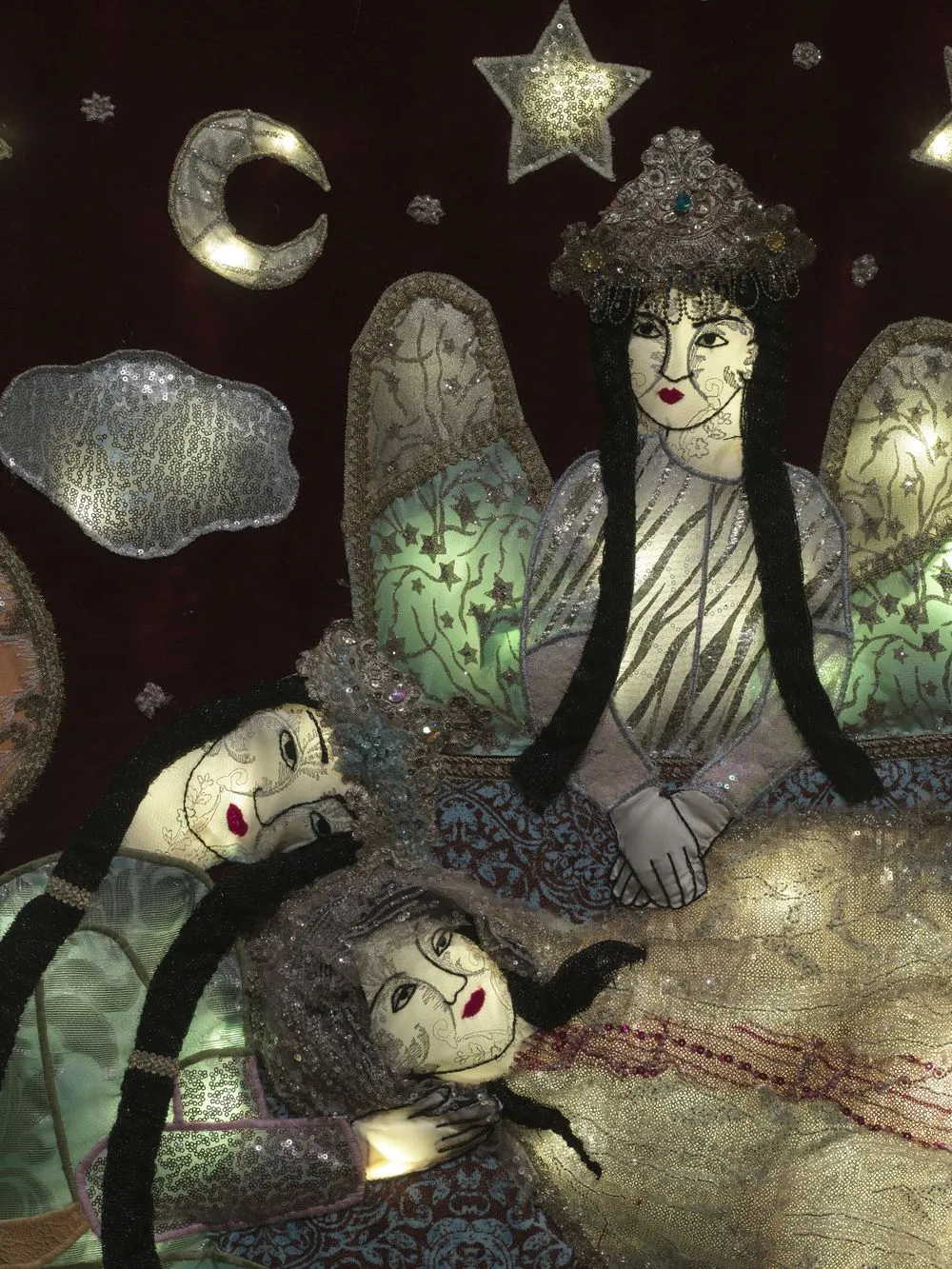
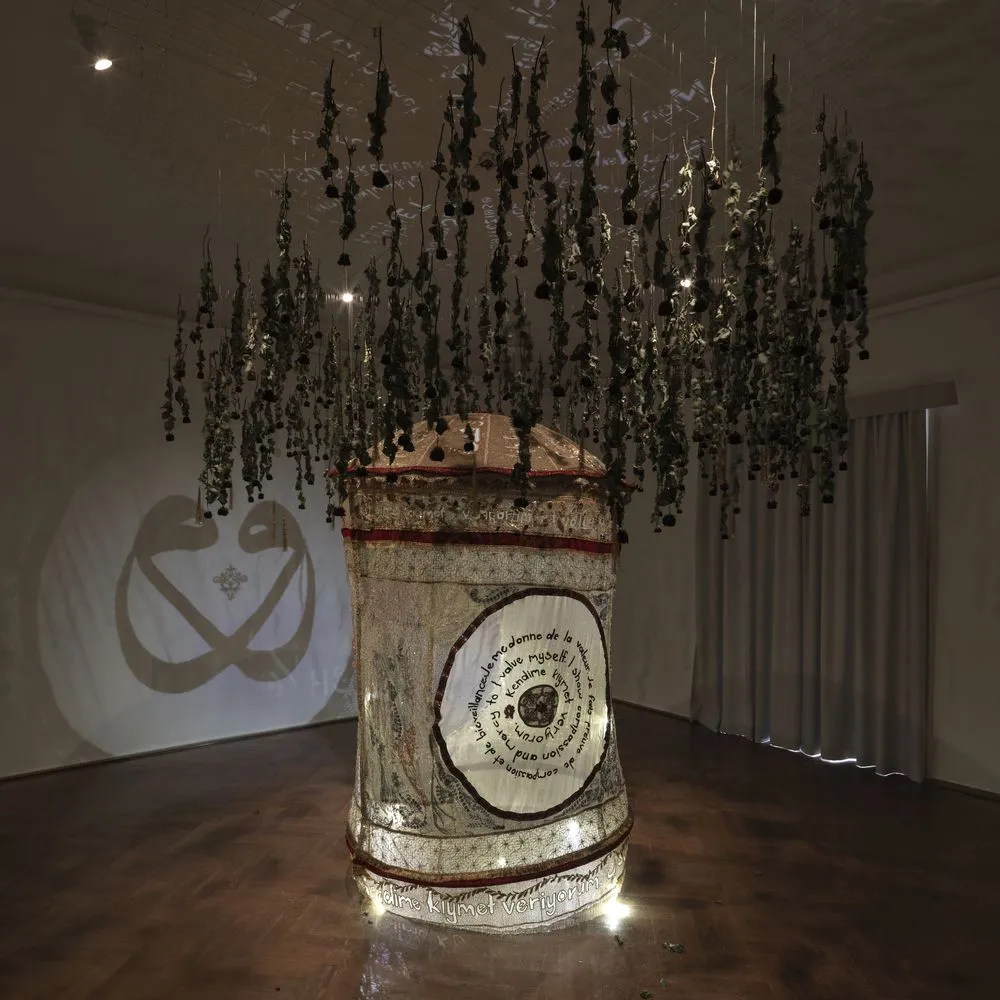
While Joan Jonas highlights care across species, CANAN's Kıymeti Zatiyye (Intrinsic Value), presented at MGLC Grad Tivoli, brings the Biennale's themes of care and regeneration into the intimate realms of self and society, emphasizing how collective healing begins with honoring personal dignity. Through four immersive rooms—Privacy, Compassion, Mercy, and Value—the installation employs fabric, sequins, golden bridal veils, and sound to explore how recognizing individual dignity and setting personal boundaries are vital for building trust, solidarity, and democratic regeneration. Her work underlines that collective healing begins with honoring the intrinsic value of each person, making it a crucial complement to the exhibition’s broader themes of relationality and resilience.
Nearby, Gabriel Abrantes's Bardo Loops (2024) reflects the psychic disorientation of a society suspended in crisis. Drawing from George Saunders's Lincoln in the Bardo, the 4-channel video installation follows two animated ghosts locked in endless, absurd debate across glitchy, post-apocalyptic landscapes. Their looping arguments echo the burnout of online discourse and the collapse of shared meaning. Beneath the satire, however, lies a mournful reflection on grief, memory, and the possibility of release. In this liminal space, Abrantes stages the bardo as both diagnosis and purgatory—a place where the past lingers and the future remains uncertain.
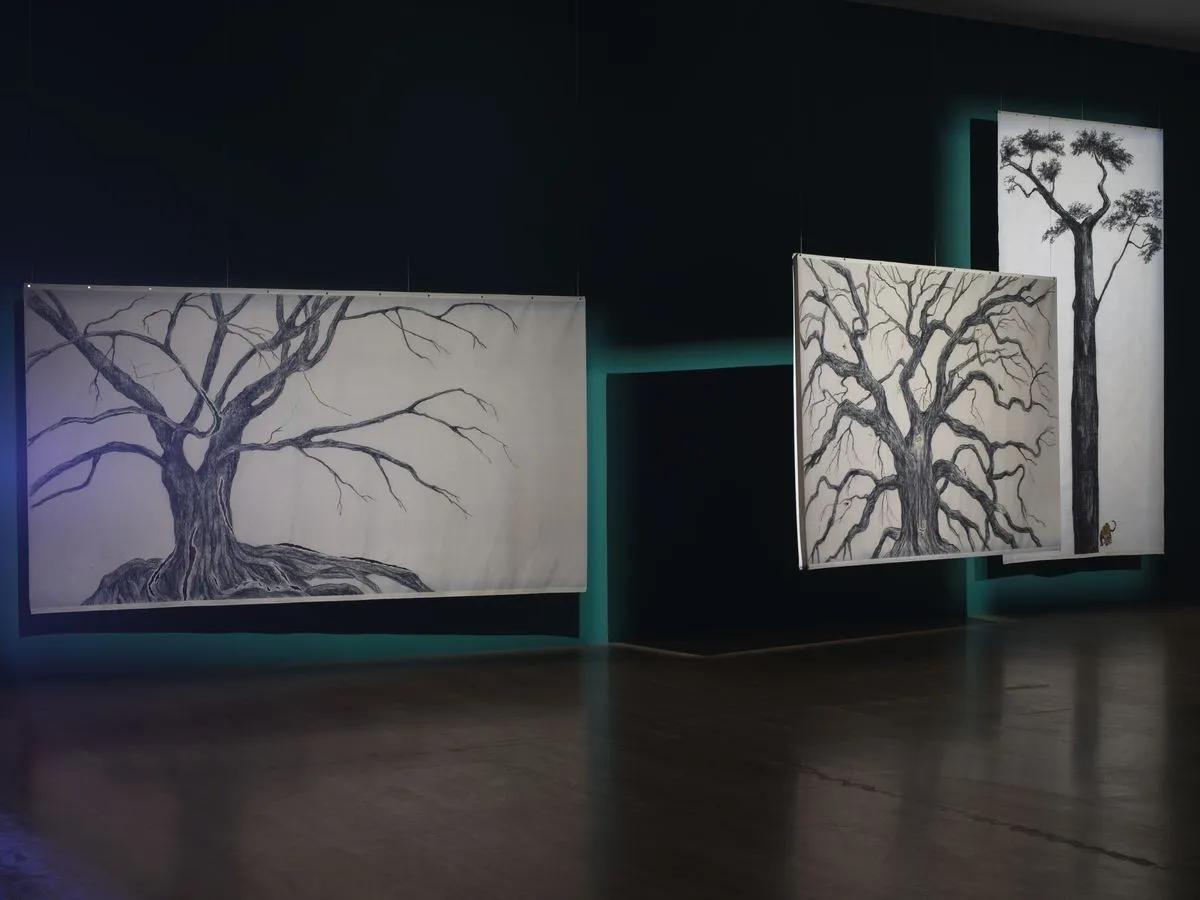
The figure of the puppet — a proxy for human will and agency — echoes throughout the exhibition, connecting traditional forms of control and autonomy to today's technological surrogates. In an age where artificial intelligence and robotics increasingly mediate our actions and presence, these proxies raise urgent questions: What does it mean to be replaced, controlled, or represented by machines? How do we reclaim our agency when our bodies and voices become filtered through artificial intermediaries such as machines, avatars, and algorithmic systems?
This tension is vividly embodied in Yarema Malashchuk and Roman Khimei's Open World (2025), a dual-channel video commissioned for the Biennale and exhibited at the Museum of Modern Art. The work follows a displaced Ukrainian child who returns to their war-torn neighborhood through the eyes of a remote-controlled robot dog. Originally built as a military device, the robot transforms into a fragile avatar — a stand-in presence that enables connection amid absence, while underscoring the painful realities of physical displacement and mediated existence.
“If we are alive, we need to be fearless in facing a fact: no one is going to reverse the wrong on our behalf, it is up to us. Take a deep breath, and go.” — Chus Martínez, The Oracle: A Curatorial Diary from Ljubljana, Mousse Magazine
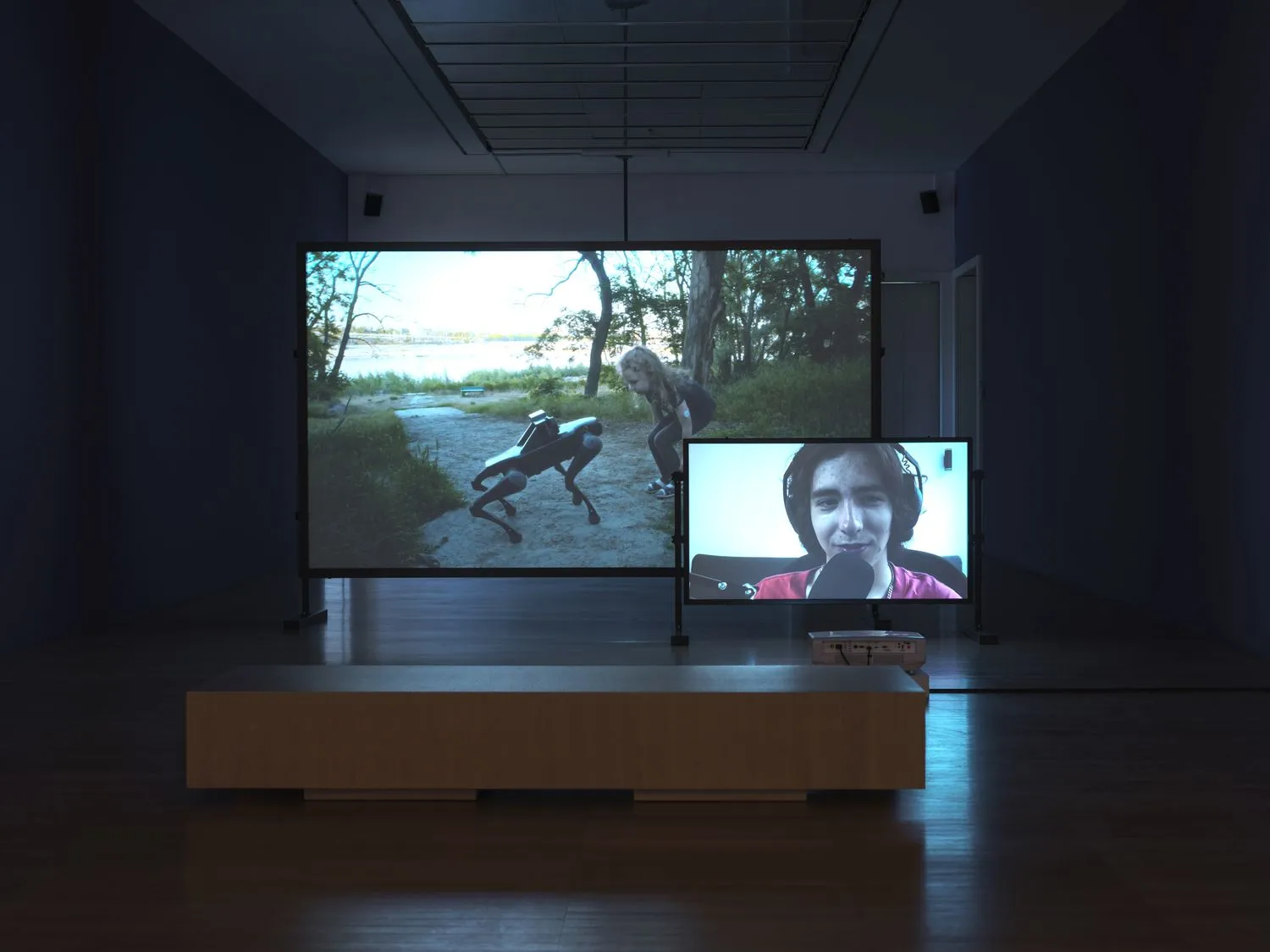
In a world where democracy grows increasingly fragile, authoritarian forces rise, and emerging technologies like AI challenge our sense of agency and authorship, this milestone edition of the Ljubljana Biennale invokes the oracle's unsettled space, where ambiguity and hope converge. The biennale becomes a living prophecy—not because it foresees the future, but because it dares to ask what kind of future we are willing to fight for. It confronts the erosion of agency and the fracturing of community, urging a collective reckoning with how we might reimagine solidarity and resilience. Here, regeneration is not resolution but ongoing dialogue—a living prophecy that calls for our engagement, courage, and imagination in the face of political uncertainty. This is where the Biennale locates its hope: in that "tiny but meaningful spot" where art enables reflection, relation, and resistance.
The 36th Ljubljana Biennale of Graphic Arts brings together 25 international artists and unfolds in various venues across the city—the International Centre of Graphic Arts (MGLC), located in two historic buildings in the heart of Ljubljana's Tivoli Park (Grad Tivoli and Švicarija); outdoor venues in Tivoli Park; the Museum of Modern Art (Moderna galerija); and the City Art Gallery Ljubljana (Mestna galerija Ljubljana). It will be on view until October 12th, 2025.
